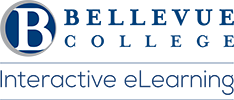What is Backward Design?
Now that students are registering for your Winter courses, you may be thinking about any course redesigns or remodels you want to implement. (Or, you may be thinking about building anew or even starting from scratch if you’ve just been assigned a course you’ve never taught.)
One of the best ways to think about course development, according to many educational researchers, is called “Backward Design.” Just as the name implies, Backward Design begins with the end of the course. Or, more accurately, with the long-term effects your course might have. (So, it might be even more precise to call it “Future Design,” but we can save that debate for a later post.) Backward Design is a technique for building a course so it facilitates the changes you want to see in students—far beyond focusing on content acquisition.
Below is an excellent video introduction to Backward Design, a 2011 workshop entitled “How to Design and Teach a Course Using a Backwards Design Approach” facilitated by Donna Ziegenfuss of the University of Utah’s Center for Teaching and Learning Excellence. [You can scroll down to the video or read the summary below on the way.]
How does it work?
In this video, Ziegenfuss suggests you begin your Backward Design by asking two questions:
- Where do you want your students to be one year after your course?
- What do you want them to remember, to do, and to be?
She calls your answers to these questions your “Dream or Vision for your students.”
And, she points out that most of us want our students to evolve over the course of their educations, not just gain knowledge or understanding. What we want for is value-added content, where they don’t just acquire content but change as people as they learn.
She then shows how this value-added content is delineated in L. Dee Finks’ Taxonomy of Significant Learning—a revisions of Bloom’s Taxonomy of Learning that reflects the human change we want often want to see in our students.
In “What is ‘Significant Learning’?” Fink begins by reminding us that,
Students will always learn something, but good teachers want their students to learn something important or significant, rather than something relatively insignificant. This leads to a question that is key to the whole teaching enterprise: What are the ways in which learning can be significant? (1)
And ends by challenging us with,
In fact, the most significant kind of learning experience is one in which students achieve all six kinds of significant learning. And that is possible—if teachers learn how to design their courses properly with these goals in mind. That is the special capability of “integrated course design.” (8)
How do you implement it?
The point of Backward Design is to design your course goals/objectives with your dream/vision in mind.
To do that, you need to:
- Determine your dream
- Align your course with your dream. (See the Alignment Grid Worksheet available here.)
- Structure and Sequence your course.
Then, take that design into account as you develop your online build through the Quality Online Course Design Process: Design, Build, Teach, Revise.
At Bellevue College, if you get stuck along the way, you can stop by eLearning to talk with an instructional designer or refer to the Quality Online Instruction Rubric for recommendations.
For more information on Backward Design see:
- A Self-Directed Guide to Designing Courses for Significant Learning by L. Dee Fink, PhD. Director, Instructional Development Program. University of Oklahoma. The PDF is available at this site: Designing Courses for Significant Learning.
- “What is ‘Significant Learning’?” By L. Dee Fink. Available here: https://ida.qualitymatters.org/elearning-marketplace-product/what-significant-learning.
- Creating Significant Learning Experiences: An Integrated Approach to Designing College Courses. Second Edition. By L. Dee Fink. Jossey-Bass Publishers. 2013.
Brian Bergen-Aurand is an Instructional Designer in eLearning and Faculty in Arts & Humanities. He specialized in questions of Quality Standards (QOI, QM).
Last Updated October 24, 2020
